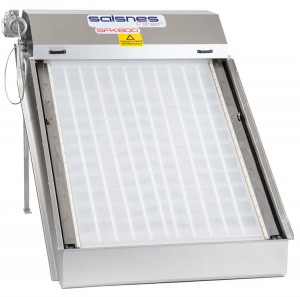Wastewater treatment plants have traditionally been a cost-center for municipalities as treated effluent is often discharged back into the environment with little to no beneficial reuse. This is starting to change as wastewater professionals are finding innovative ways to produce a resource to use or sell. By doing this, operating costs can be cut and ideally Plants can become profit-centers.
For the Netherlands, resource recovery is a main priority and the Beemster Wastewater Treatment Plant (WWTP), near Amsterdam, is an example of this. The WWTP uses eight SFK600 Salsnes Filters to separate fine cellulose fibers from toilet paper in the wastewater. Fibers are collected and further processed into sugar and in a next stage to lactic acid as a base material for bioplastic (PLA).
The WWTP also discovered an added benefit of removing cellulose from the wastewater. The organic loading on their downstream biological process has been reduced, which has lowered the Plant’s aeration requirements and energy consumption.
The Salsnes Filter installation at Beemster WWTP was built in close collaboration with our partner in the Netherlands; BWA B.V.
In this video from the national Netherlands TV station KNN Group B.V., Bob de Boer of Waterboard Hollands Noorderkwartier explains the process of the Salsnes Filter system and its use at the Beemster WWTP. The video also discusses how cellulose from screenings can be reused in other applications. It has recently been used as an ingredient in the production of asphalt to create a bike path in the area.


